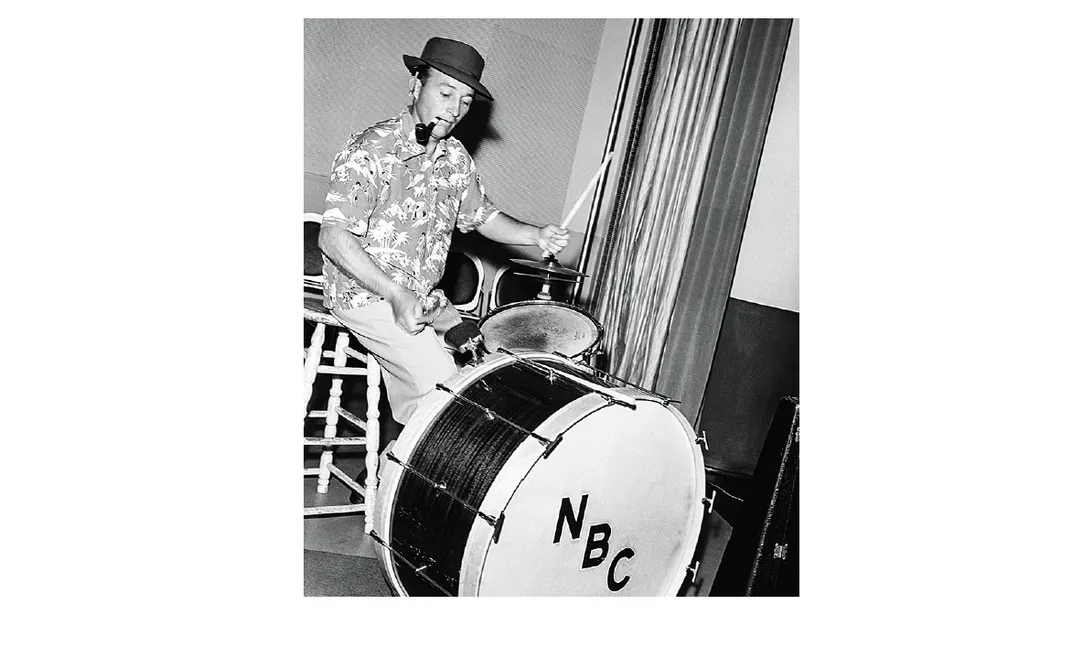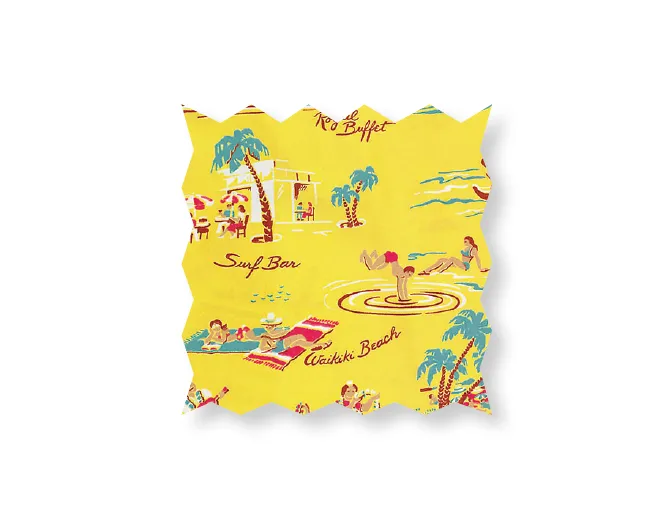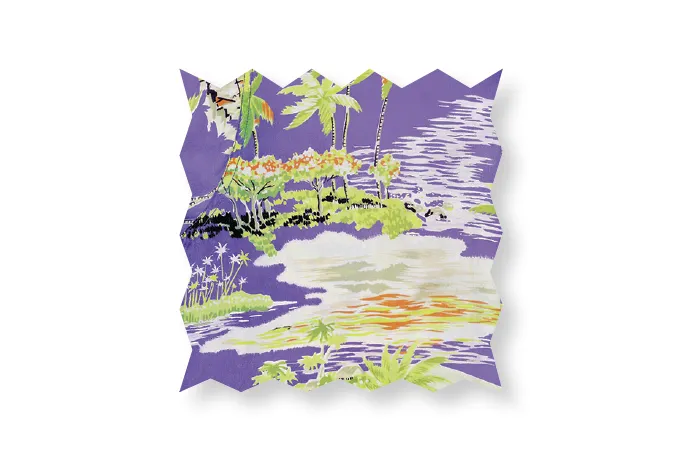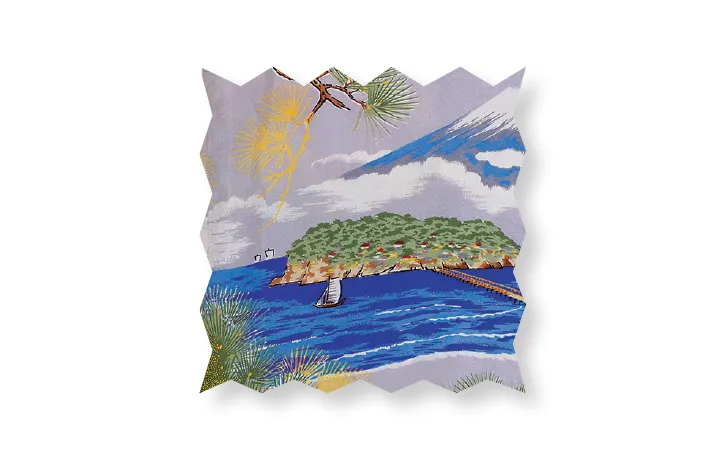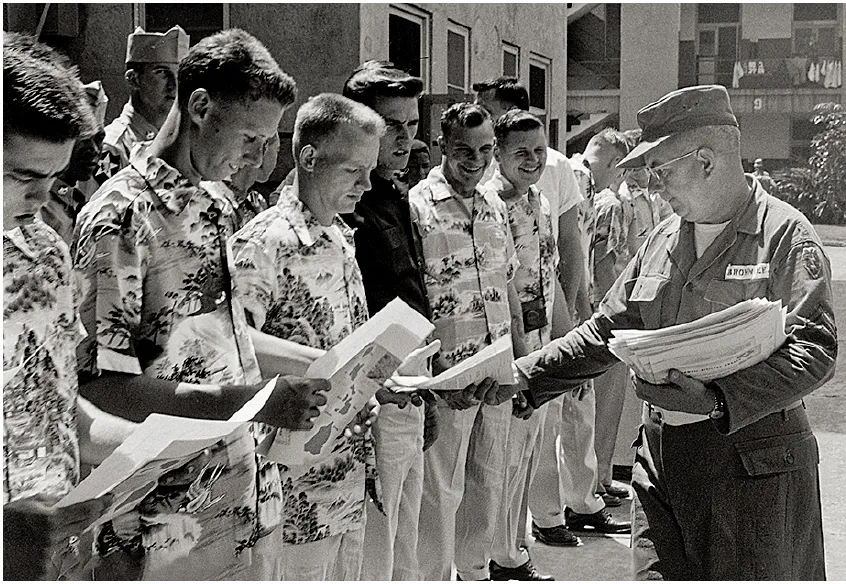The History of the Hawaiian Shirt
From kitsch to cool, ride the waves of undulating popularity of a tropical fashion statement
/https://tf-cmsv2-smithsonianmag-media.s3.amazonaws.com/filer/14/7d/147d15a8-e391-416e-8137-26a7c16ad743/may20_pro_iconopener.jpg)
Mainland Americans have long looked to Hawaii to ease their minds. At the height of World War I, with America about to enter the conflict, Hawaiian music was all the rage. In 1916, Hawaiian records outsold all other genres, while ukuleles were so ubiquitous in college dorms and upper-crust nightclubs that the New York Tribune ran a full-page illustration of an imagined “Ukulele Square, the Hawaiian Quarter of New York.” During the Great Depression, Americans again cast their eyes toward Hawaii, co-opting another piece of Hawaiian culture: the aloha shirt.
Though its precise origins are lost to history, the aloha shirt first appeared in Hawaii in the 1920s or ’30s, probably when local Japanese women adapted kimono fabric for use in men’s shirting. The shirts achieved some popularity among tourists to Hawaii and found greater commercial success when they hit the mainland in the mid-1930s. America at the time was riddled with hardship and anxiety, with many men out of work and many others struggling to hold on to their breadwinner status. Perhaps in response, hyper-manliness came into vogue—the popularity of bodybuilding skyrocketed, Superman burst onto the scene. It may seem paradoxical that men embraced a garment with such feminine appeal. “You’d better get two or three because it’s a cinch your daughter, sister, wife or even mother will want this bright-colored shirt as soon as she sees it,” the Los Angeles Times teased in 1936. That didn’t stop men from buying. By 1940, aloha shirts were bringing in more than $11 million annually (in today’s money).
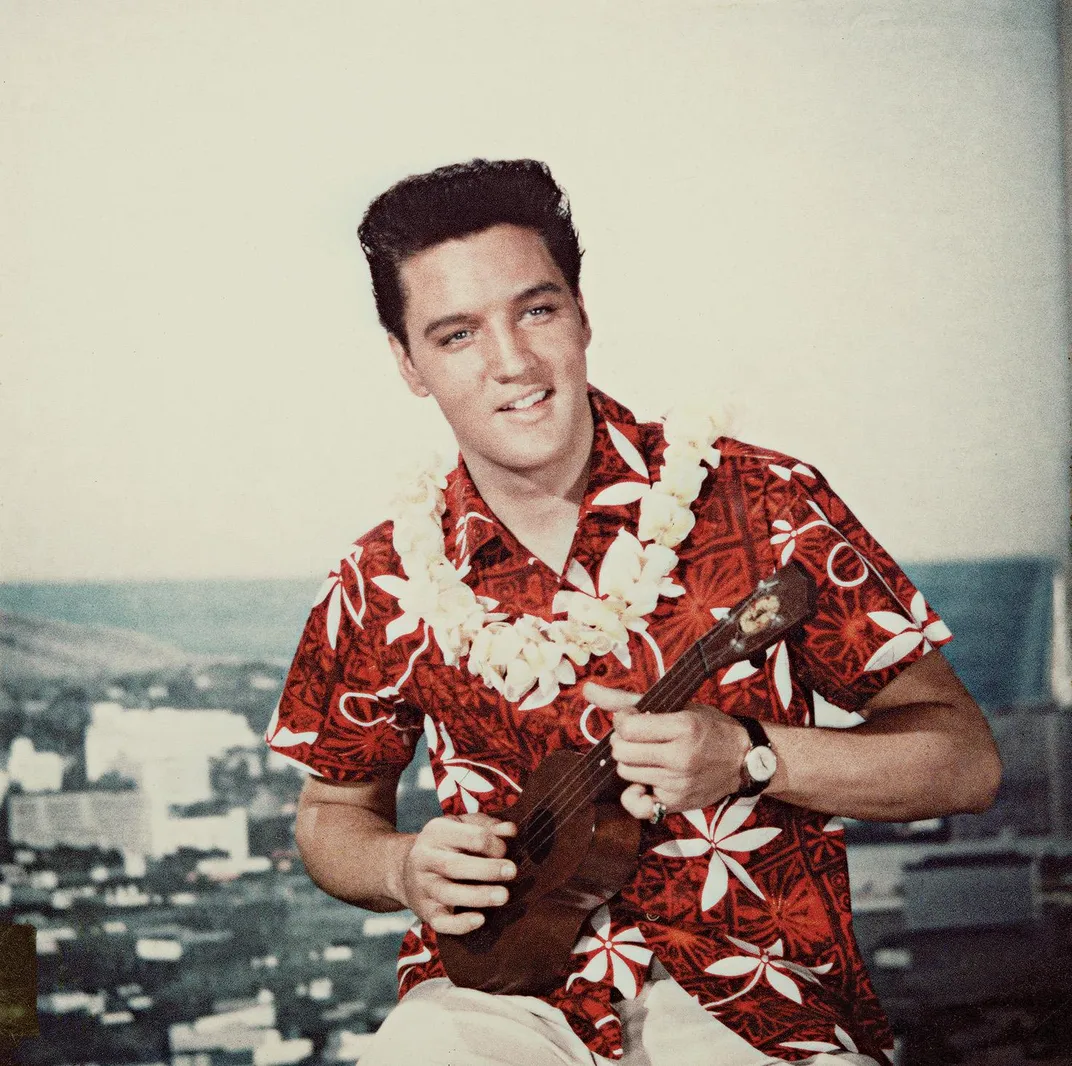
One reason men adopted a garment otherwise suited to their sisters’ closet was that rich, famous men wore it. Visitors to Hawaii in the 1930s were invariably wealthy, and before long, aloha shirts were being sold by celebrities whom everyday Americans sought to emulate. American heroes from three-time Olympic swimming champion and surfing pioneer Duke Kahanamoku to singer Bing Crosby were lending their names to particular brands. Those endorsements, says Dale Hope, a historian and the author of The Aloha Shirt: Spirit of the Islands, had “a huge effect on people purchasing those shirts.” If you could wear what the man unscathed by the Depression was wearing, it didn’t matter that it was feminine: You looked like someone who didn’t need to worry about his masculine bona fides.
Once the shirt reached stores in the Lower 48, any day laborer could have for just a dollar what before had required an exorbitant trip. A man in an aloha shirt, with its depictions of hula dancers and luaus—“symbol[s] of the comfortable, gay and picturesque,” one journalist put it in 1939—could look the part of the carefree swell.
The notion that Hawaii was a quiet paradise was shattered in 1941 with the Japanese attack on Pearl Harbor, and makers of aloha shirts, like others in the garment industry, turned to supplying the war effort. When production resumed, Japanese-influenced designs that had been common—featuring cherry blossoms and shrines—temporarily fell out of fashion, supplanted by designs that highlighted Hawaii’s local culture. Service members returning to the mainland from the Pacific made the signature apparel more popular than ever.
By the 1960s, the shirt had become truly ubiquitous. Aloha Fridays were a fixture of a certain kind of workplace, and everyone—from Elvis to the decidedly unhip Richard Nixon—seemed to have an aloha shirt. Over time, perhaps inevitably, it lapsed into the realm of corny suburban-dad-wear.
Yet in just the past five years, fashion magazines have been heralding a comeback, and high-end labels like Gucci are taking the aloha shirt to new heights, with prints that draw on Japanese designs favored in the garment’s early days. Meanwhile, some shirtmakers from Hawaii’s old guard are still going strong. Kahala, founded in 1936 as one of the first brands producing aloha shirts, has been raiding its vaults to reproduce designs dating back to the 1930s—including some popularized by Duke Kahanamoku. “People are looking to bring some light, some color, some vibrancy into their lives,” says Jason Morgan, Kahala’s general manager. “I think that’s needed now more than ever. If an aloha shirt can help improve somebody’s day, I think that’s pretty powerful.”
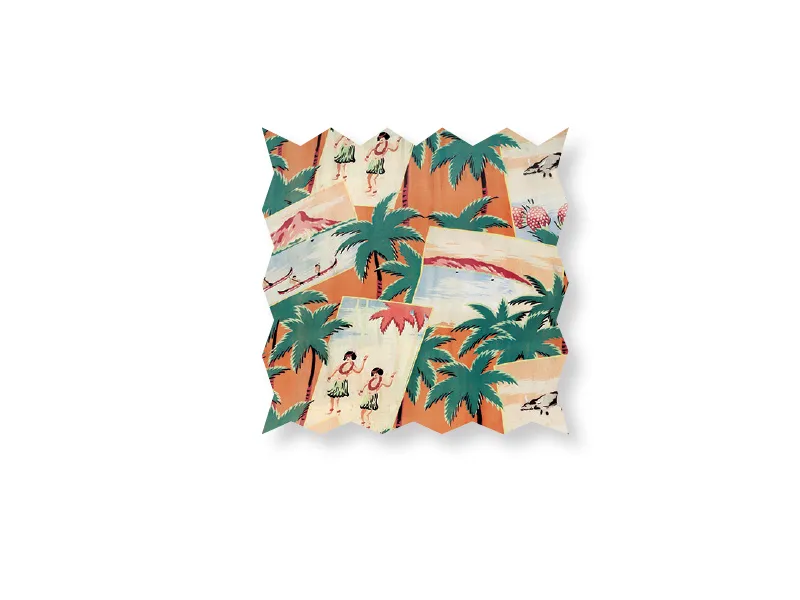
/https://tf-cmsv2-smithsonianmag-media.s3.amazonaws.com/filer/f6/6f/f66f3a31-a62d-47f2-b14b-30e06e2ab248/red-swatch.jpg)
